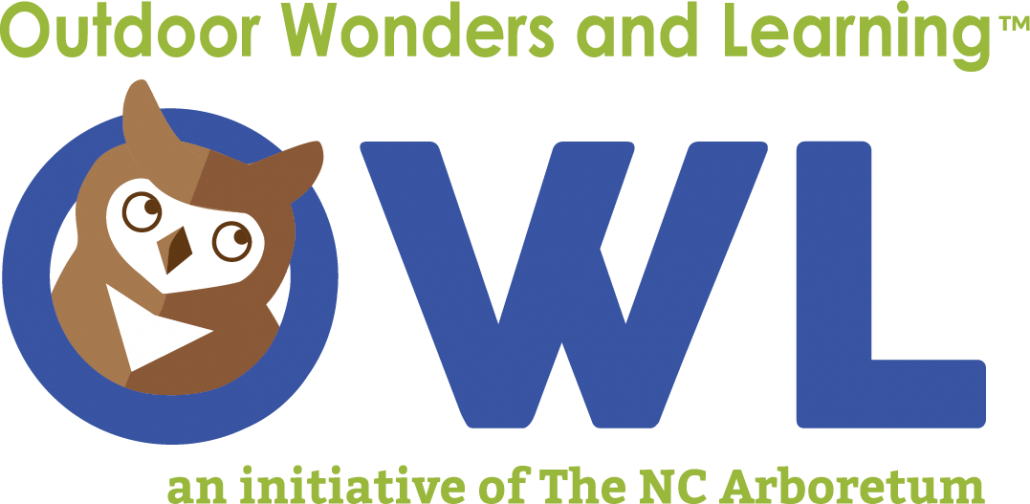Glossary
Abiotic – a non-living factor in an environment (light, water, air, soil).
Adaptation – an internal or external feature or behavior that helps an organism survive in its habitat.
Biodiversity – variety of species present in an ecosystem.
Biotic – a living factor in an environment (plants and animals).
Cambium – the thin layer of living tissue just under the bark of trees. This layer is where the tree grows from.
Chlorophyll – the pigments that produce the green color of plants and are essential for photosynthesis to occur.
Cloud – a visible mass of water droplets or ice crystals that is suspended in the air at high altitude. Basic classifications are cirrus, stratus, and cumulus.
Consumer – an organism that obtains energy by feeding on another living thing (plant or animal).
Decomposer – an organism that feeds obtains energy by feeding on dead material and breaks it down physically and chemically.
Dichotomous Key – a tool used to identify items in the natural world, consisting of a series of choices to lead the user to the correct option.
Ecosystem – the interactions between biotic and abiotic factors in an environment.
El Niño – the warm phase of the fluctuations in temperature between the ocean and the atmosphere, typically occurring in the Pacific Ocean around December and affecting the weather patterns across North America.
Flower – the reproductive structure of a plant.
Front – regarding weather, it is a boundary separating two masses of air of different densities, typically warm and cold.
Fruit – the seed-bearing structure in flowering plants.
Gulf Stream – a warm and swift Atlantic Ocean current that originates in the Gulf of Mexico and stretches to the tip of Florida, then follows the eastern US coastline north.
Habitat – a place where a plant or animal lives and is able to get food, water, shelter, and space.
Hurricane – a large tropical storm system with high-powered circular winds.
Interdependence – when two or more organisms depend on each other for survival.
Interrelated/Interrelationship – the way two or more organisms relate to each other.
Jet Stream – a fast flowing narrow air current in the upper atmosphere over North America. It flows from west to east and greatly affects the weather patterns.
Leaves – flattened parts of a plant, typically green and filled with chlorophyll; these are the main organs of photosynthesis and transpiration.
Life Cycle – the phases or changes of an organism during its lifetime.
Limiting Factor(s) – environmental conditions that limit the growth, abundance, or distribution of an organism or population of organisms in an ecosystem.
Native – occurring naturally in an area or habitat.
Niche – the role played by a plant or animal in its ecosystem.
Phloem – the tissue in plants that moves the nutrients down from the leaves into the other parts of the plants.
Photosynthesis – the process where green plants produce sugars as food by combining sunlight, carbon dioxide, and water. Chlorophyll must be present.
Pollen – microscopic grains that are moved from the male part of the plant (anther) and collect on the female part of the plant (stigma) by wind, insects, or other animals.
Precipitation – water that falls to the ground from the atmosphere in different forms depending on its temperature—snow, rain, sleet.
Producer – an organism that makes its own food using photosynthesis (green plants) or chemosynthesis (bacteria).
Roots – the part of the plant that attaches to the ground for support and to move water and minerals to the rest of the plant.
Sap – the liquid inside a vascular plant that moves through the xylem and phloem.
Sapling – a young tree with a slender trunk no wider than 4 inches in diameter.
Seed – an object produced by a plant after pollination and fertilization, from which a new plant can grow.
Sit Spot – a quiet place for a student to settle down, cultivate awareness, and quiet their mind.
Snag – a dead tree that is still standing, often providing a home to many animals.
Sprout – the small new growth from a plant seed.
Stem – the stalk of a plant that supports a fruit, leaf, or flower.
Stomata – microscopic openings in a leaf that allow gas to move in and out (transpiration).
Temperature – the degree of heat present in a substance, object, or area.
Think, Pair, Share – a collaborative learning strategy where a student first thinks about the topic or question, the pairs up and shares ideas with a partner, then concludes with sharing ideas with the group.
Vascular Plants – any type of plant with the vascular tissues xylem and phloem. This includes all seed-bearing plants.
Wind – air moving naturally across the earth’s surface at any speed.
Xylem – woody tissue in plants that moves water from the roots to the rest of the plant, stores nutrients, and offers structural support.

